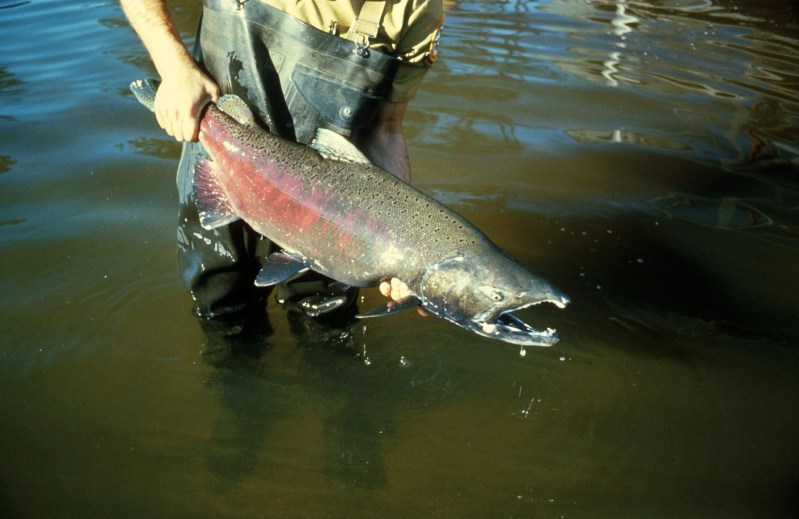For most Californians currently getting pummeled by atmospheric rivers of rain, it’s hard to believe there could possibly still be effects of a drought that, right about now, seems like a distant memory. USA Today reports that after all of the recent California storms, data reveals that parts of California are 200% over the historical average for rainfall year to date.
In fact, after decades of California’s uncomfortable parch, only 36% of the state is still in drought, according to the U.S. Drought Monitor. And while this is obviously welcome news after such a difficult period, there is, of course, a chain reaction after such drastic dryness. One of those reactions is that California has had to cancel its 2023 ocean salmon fishing season.
Due to the drought, salmon populations have decreased significantly. In 2022, of the 196,000 Chinook salmon expected, only 60,000 adults returned to the Sacramento River to spawn. According to the fish and wildlife department, this was dangerously close to a record low for the area.

As a result, the state has teamed up with the National Marine Fisheries Service, including state agencies in Oregon, to ban salmon fishing along the coast from Cape Falcon, Oregon, to the U.S./Mexico border. The ban will run until May 15, and could potentially last through April 2024.
This isn’t the first time this has happened. Salmon fishing was also banned due to drought during the 2008/2009 season. And while the ban did increase the salmon population, it also resulted in what NOAA called a “collapse of the salmon fishery.” According to their research, the 2008 ban forced 1,200 fishing boats to stay in port, and as many as 23,000 jobs were lost. The salmon fishing industry is one upon which tens of thousands of Californians depend, and another ban could result in an absolutely devastating loss.
In the meantime, you’re likely to see higher-priced salmon dishes when you go out to eat (or other fish entirely) — and it’s probably a good time to perfect your cooking skills when it comes to salmon alternatives.



